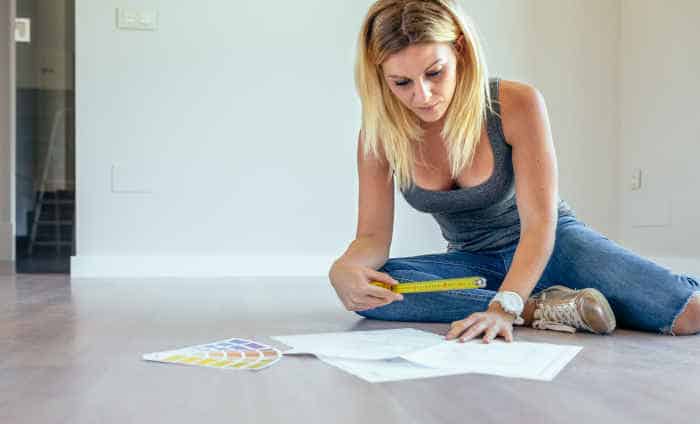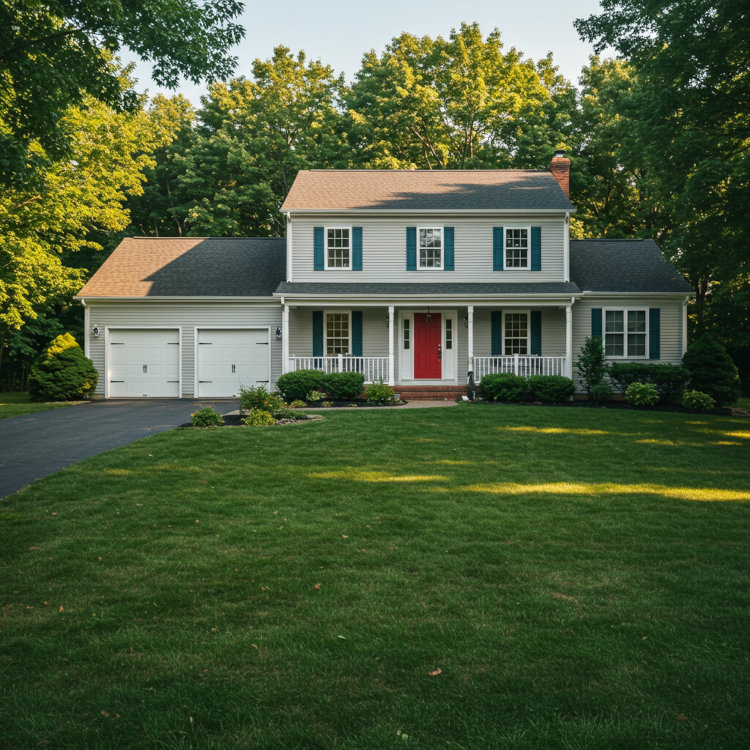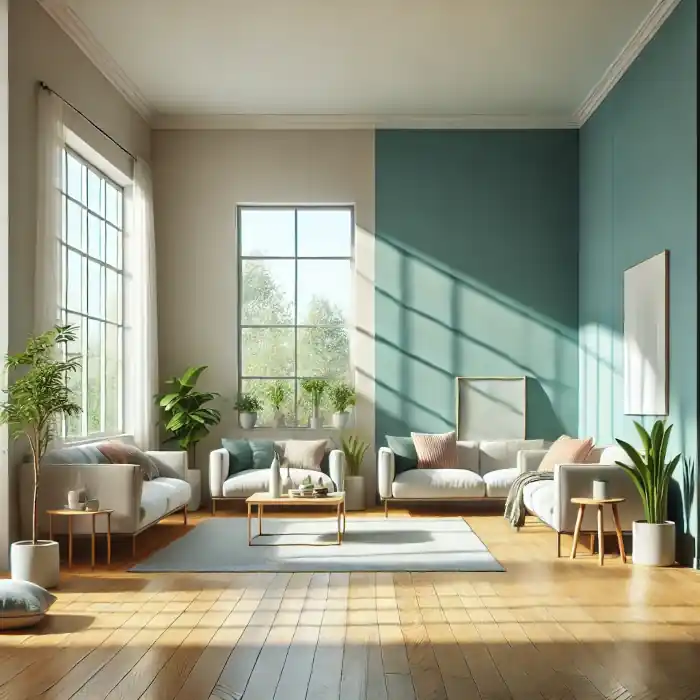As an Amazon Associate, I earn from qualifying purchases. Privacy Policy / Terms
If you’re about to embark on a house painting project—be it a single bedroom or your entire living space—understanding how to calculate square footage is a must. Armed with the right measurements, you’ll buy just the right amount of paint and sidestep the hassle of running out mid-stroke. Plus, you’ll get a better handle on your budget and timeline. In this guide, we’ll walk you through the best methods for measuring square footage so you can tackle any paint job with confidence.
Why Square Footage Matters for Painting
- Budget and Materials: Calculating total square footage ensures you purchase the right amount of paint. Overbuying can be costly, and underbuying can leave you in a bind when you’re halfway done painting.
- Time Efficiency: Knowing the footage of a home or a specific footage of a room helps you figure out how long the job might take, especially if you’re dealing with high traffic areas like hallways or living rooms that might require more coats.
- Project Scope: If you’re considering different paint finishes—maybe something easy to clean in the kids’ playroom or a high-gloss finish in the kitchen—your total area influences not only how much paint you need, but also how you’ll budget for primers and specialty finishes.
How to Calculate Square Footage: The Basic Formula
A common question is: “How to calculate square footage?” or “How to calculate a square footage?” The formula is refreshingly simple:
Square Footage=Length×Width\text{Square Footage} = \text{Length} \times \text{Width}Square Footage=Length×Width
But don’t be fooled by its simplicity—rooms can have tricky layouts. Let’s break it down further.
1. Gather Your Tools
All you really need is a tape measure, a calculator (or a smartphone), and something to jot down notes. You’ll be multiplying the length by the width, so make sure to keep track of each measurement in feet.
2. Focus on Each Rectangular Room
If you have a perfect rectangular room, measuring is straightforward. For example, if the room is 10 feet long by 12 feet wide, your length x width calculation is: 10×12 = 120 Square Feet.
How to Calculate Square Footage of a Room with Odd Shapes
Another big query: “How to calculate square footage of a room” or “How to calculate the square footage of a room” if the shape isn’t a perfect rectangle? Simply divide it into smaller rectangles, measure each section, and add everything together to find the total area.
For instance, if your living room has a small alcove, treat that alcove like its own rectangular space, calculate the area (length x width), and then add it to the main section’s total. Remember, even a few extra square feet can make a difference in how much paint you need to buy.
How to Calculate Square Footage of a House
If you’re tackling a full home refresh, you might ask: “How to calculate square footage of a house?” or “How to calculate home square footage?” This often comes up when real estate agents discuss property size, but it’s just as important when planning a paint job. Here’s how:
- Room-by-Room Approach: Measure each room’s dimensions separately, then add them up to get the total square footage.
- Include Finished Basements or Attics: If you plan to paint these, include them in your measurements.
- Combine the Floors: If your home has multiple levels, add the totals for each floor. That combined number is the footage of a home you’ll be painting.
While some definitions exclude certain areas (like crawl spaces) from living space, include anything you plan to paint.
Walls vs. Painted Surface
You might also wonder why we’re focusing on the floor dimensions when painting walls. Many paint calculators start with measure the square footage of the floor, then estimate wall coverage based on average room height. However, for an even more precise measurement of painted surface, measure the walls directly:
- Perimeter: Add the lengths of all walls in the room.
- Height: Multiply the perimeter by the wall height.
- Subtract Openings: Deduct door and window areas if you want the exact painted surface in square feet (or square inch if you’re super precise).
Quick Tips for Painting
- Primer Counts: If you’re painting high traffic areas or making a drastic color change, primer can reduce the total coats needed.
- Choose the Right Finish: For rooms that must be easy to clean, like kids’ bedrooms or kitchens, consider semi-gloss or satin finishes.
- Plan for Multiple Coats: Dark-to-light transitions often need two to three coats. Use your total area to figure out how many gallons to buy.
- Always Have Extra: It’s wise to buy a little more paint than your calculations indicate. Small errors in measuring square footage can add up, and you’ll want extra for touch-ups later.
Common Questions: Square Footage FAQs
- “How to calculate room square footage?”
- Measure length and width with a tape measure, then multiply. For irregular rooms, break them into smaller shapes.
- “I have a vaulted ceiling. Should I measure differently?”
- Yes, if you’re painting the ceiling. Measure each angled section separately (length x slant height) and add them for the total ceiling area.
- “Do closets count as living space?”
- If you plan to paint them, include their footage of a room in your numbers.
Wrapping It Up
Whether you’re painting living rooms or the entire home, knowing how to calculate square footage is a game-changer. Start by measuring each rectangular room using length x width, then add sections for odd shapes. If you’re doing a full-house paint job, measure every living space (including basements and attics you intend to paint) and sum them up for the total square footage. This method is simple yet powerful and is the same approach real estate agents use to describe the footage of a home—you’re just applying it to figure out how many gallons of paint you’ll need.
Once you can accurately measure the square footage, you’ll have a solid foundation for choosing paint finishes, budgeting, and scheduling. And if the math gets overwhelming, don’t hesitate to call in a professional painter; they’ll know precisely how to handle every square inch of your project. Happy painting!
Views Expressed DisclaimerThe views, opinions, and information presented in this article are for informational purposes only and do not necessarily reflect the official policies or positions of Crocker Home Painting Company. While every effort has been made to ensure accuracy, Crocker Home Painting Company is not liable for any errors, omissions, or decisions made based on the content provided. Readers are encouraged to consult professionals for specific advice or assistance related to their unique circumstances.







